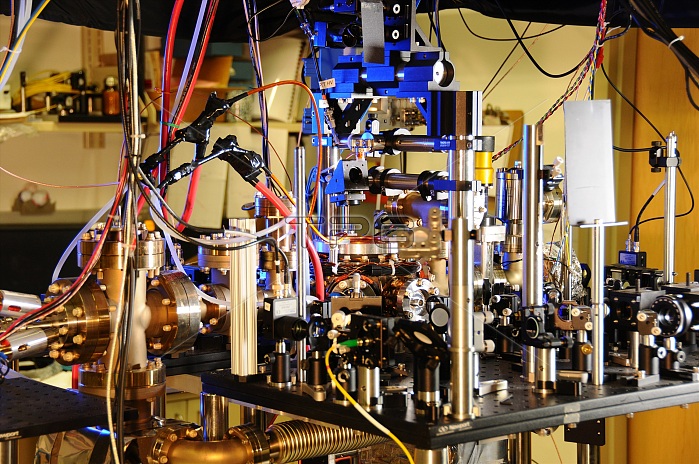
NIST's ultra-stable ytterbium lattice atomic clock. Ytterbium atoms are generated in an oven (large metal cylinder on the left) and sent to a vacuum chamber in the center of the photo to be manipulated and probed by lasers. Laser light is transported to the clock by five fibers (such as the yellow fiber in the lower center of the photo). An atomic clock is a clock device that uses an electronic transition frequency in the microwave, optical, or ultraviolet region of the electromagnetic spectrum of atoms as a frequency standard for its timekeeping element. Atomic clocks are the most accurate time and frequency standards known, and are used as primary standards for international time distribution services, to control the wave frequency of television broadcasts, and in global navigation satellite systems such as GPS. The principle of operation of an atomic clock is not based on nuclear physics, but rather on atomic physics; it uses the microwave signal that electrons in atoms emit when they change energy levels. Early atomic clocks were based on masers at room temperature. Currently, the most accurate atomic clocks first cool the atoms to near absolute zero temperature by slowing them with lasers and probing them in atomic fountains in a microwave-filled cavity.
| px | px | dpi | = | cm | x | cm | = | MB |
Details
Creative#:
TOP22302073
Source:
達志影像
Authorization Type:
RM
Release Information:
須由TPG 完整授權
Model Release:
N/A
Property Release:
No
Right to Privacy:
No
Same folder images:

 Loading
Loading